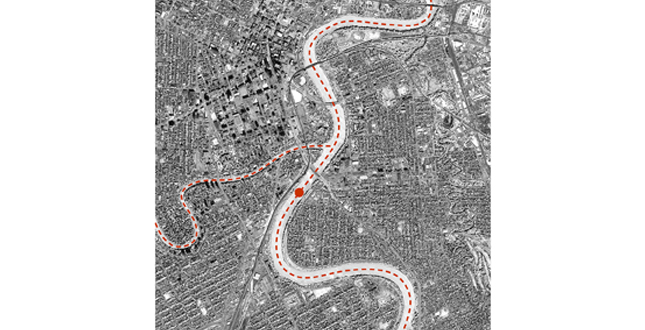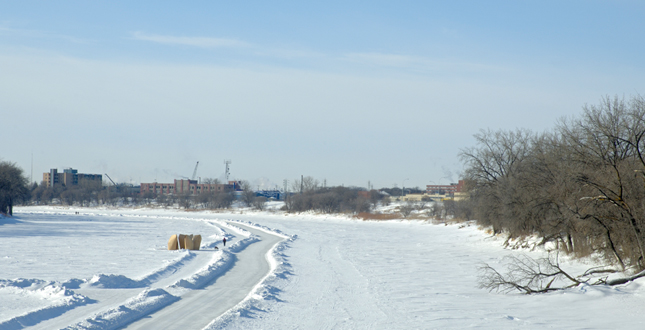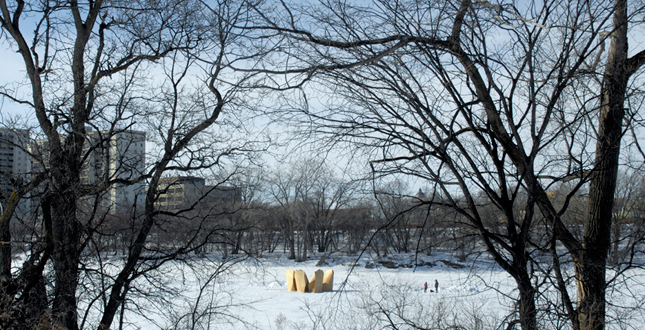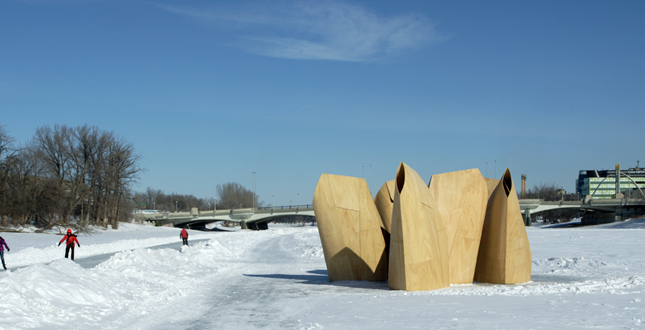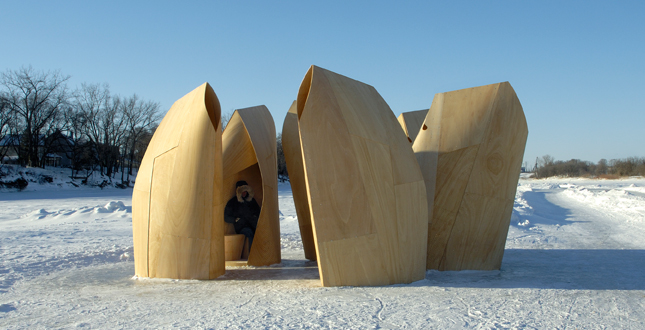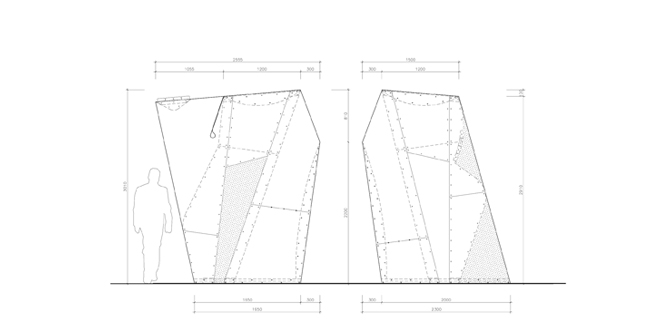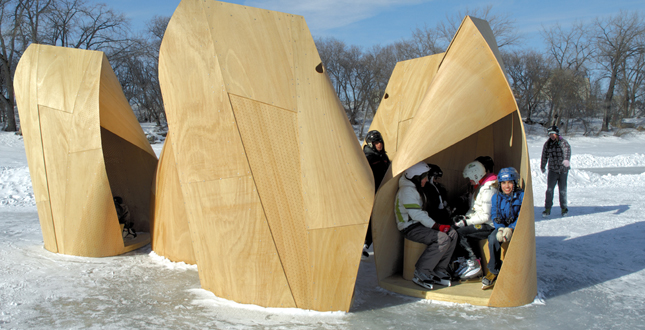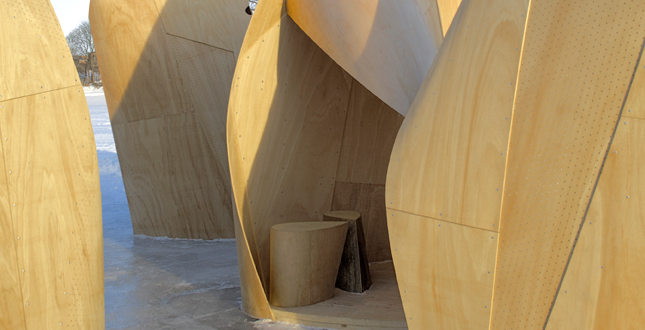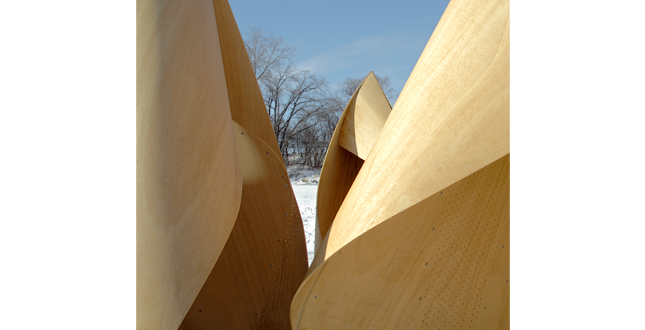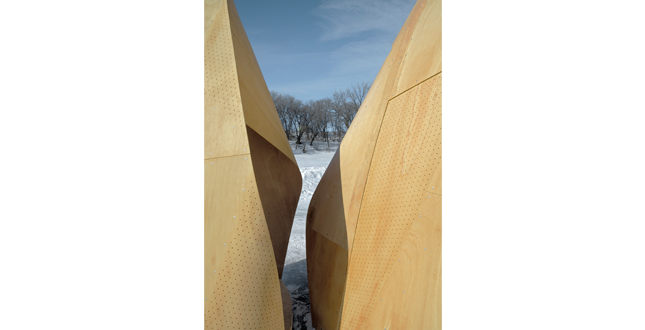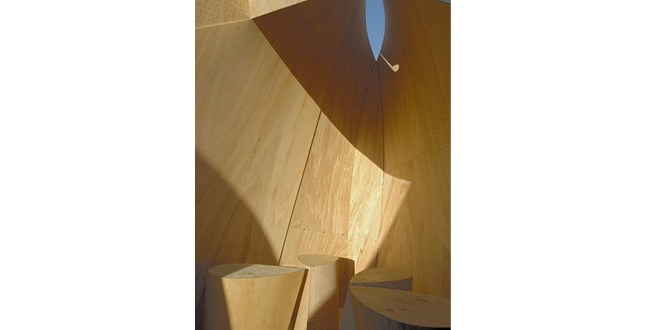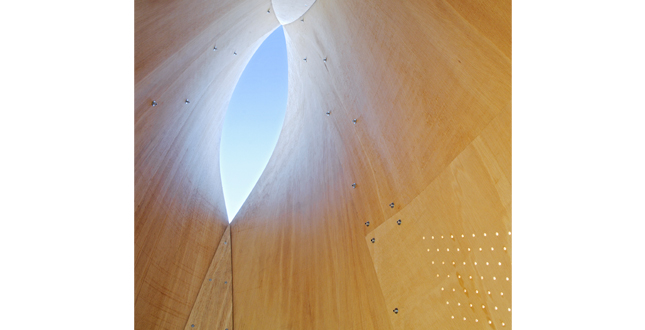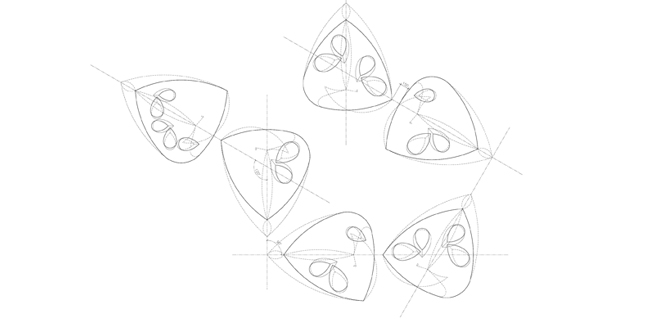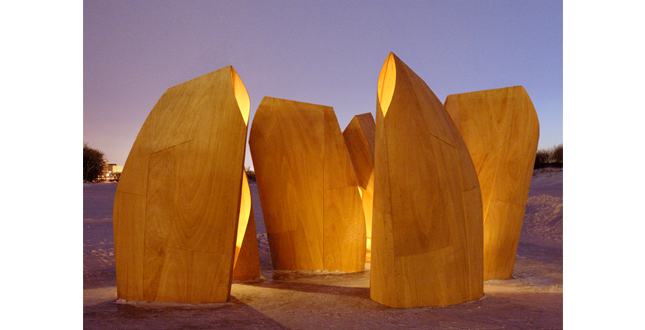Honor Award
Winnipeg Skating Shelters
Winnipeg, Manitoba, Canada
Patkau Architects, Inc. Vancouver, British Columbia, Canada
Client: The Forks Renewal Corporation
Project Statement
Six skating shelters huddle together amidst a vast frozen landscape, their intimate grouping serving to both represent and foster a larger sense of community. Wrapped in these thin plywood sheathes, trail-users are offered not only a moment of shelter from the harsh winter elements, but also an opportunity for chance encounter, an opportunity to share in the varying degrees of intimacy that the arrangement affords amidst the ferocious splendor of winter on the Canadian prairies.
Project Narrative
—2012 Professional Awards Jury
Winnipeg is a city of 600,000 residents located on the Canadian prairie. It is the coldest city of its size outside of Siberia. Winter can last six months. So learning to celebrate winter - learning to take advantage of the opportunities that winter provides — makes sense.
Public Space in Winnipeg
The Red and the Assiniboine Rivers meet in the center of the city, and in winter, when plowed of snow, skating trails many miles long are created. But with temperatures that drop to minus 30 and 40 for long periods of time, and winds that can make minus 30 feel like minus 50, creating opportunities to find shelter from the wind greatly enhances the ability to use the river skating trails. Therefore, a program has developed to sponsor the design and construction of temporary shelters located along the skating trails.
Fragile Bodies in a Harsh Landscape
Our proposal consists of a cluster of intimate shelters, each accommodating only a few people at a time. They are grouped in a small ‘village’ (or ‘herd’, or ‘school’, or ’flock’, or ‘flotilla’) to form a collective... of ‘something’... irreducible to a single interpretation. They stand with their backs to the wind, seeming to have life and purpose as they huddle together shielding each other from the elements.
The shelters are consciously formed to have their own internal scale; they sit as animate bodies separate from the landscape. They have the poignancy of fragility, surviving in the face of wicked cold and ferocious wind. They are bodies much like our own. People in Winnipeg called them ‘Penguins’.
Grouping the shelters into a cluster begins with the relationship of two, and their juxtaposition to qualify the size and accessibility of their entrance openings. This apparently casual pairing is actually achieved by a precise 120 degree rotation. Three pairs (one with mirror reflection) are then placed in relation to one another through a secondary rotation of 90 degrees to form the cluster and define an intermediate ‘interior’ space within the larger grouping. Together, the shelters create dynamic solar/wind relationships that shift according to specific orientation, time of day and environmental circumstance.
These are delicate and ‘alive’ structures. They move gently in the wind, creaking and swaying to and fro at various frequencies, floating precariously on the surface of the frozen river, shaking off any snow that might adhere to their surfaces. Their fragile and tenuous nature makes those sheltered by them supremely aware of the inevitability, ferocity and beauty of winter on the Canadian prairie landscape.
Sustainability
Minimal Material Use, Minimum Cost, Reuse
Each shelter is formed of thin, flexible plywood which is given both structure and spatial character through bending/deformation. Skins, made of 2 layers of 3/16th inch thick flexible plywood, are attached to a wood armature which consists of a triangular base, and wedge shaped spine and ridge members (the ridge is a line to negate the gravity loads of snow).
Experiments in our workshop with a full-scale prototype mapped the stresses of bending. Stress points were relieved by a series of cuts and openings (rather than adding more material). The form of the shelter is a resultant of this process of stressing/deforming and then releasing stress. All materials are from a local building supplies store. The ‘Penguins’ can be removed from the ice, stored, and reused another year.
Minimum Site Disruption, Enabling Public Space, Supporting the Social
The landscape is untouched except where the herd stands. The project enables people in Winnipeg to enjoy a harsh winter landscape.
Project Resources
Architectural Team
Lead Designers:John Patkau, ASLA; Patricia Patkau and James Eidse
Tyler Brown; Matthew Bunza; Thomas Schroeder; Luke Stern; and Peter Suter
Structural Advisor
AnnaLisa Meyboom
Construction Manager: Sputnik Architecture
Peter Hargraves







